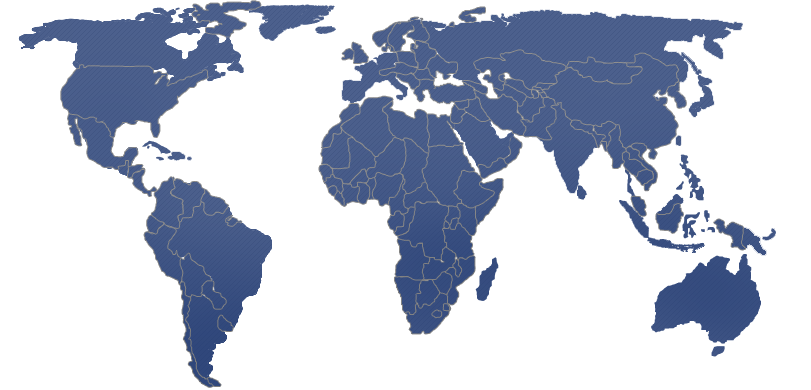DURHAM, NC – There are many traits needed to be a successful admissions officer at Duke, all with unique dualities of their own.
Analytical, but empathetic. A strong memory, but comfortable with quickly moving from one task to another. At times, robotic in action, but human in reaction.
“It’s part imagination, part critical thinking,” said Taylor Hausburg, an Undergraduate Admissions officer at Duke who covers high schools in seven states and part of North Carolina. “It’s about the ability to create a person from all these words and documents in front of you.”
But on an early March morning, one characteristic trumped them all: stamina.
Surrounded by laptops, notes and early morning coffees, it was time for Hausburg and her colleagues to put the finishing touches on Duke University’s Class of 2019. They were gathered for the start of “committees” – after the early and many regular decision applicants are selected – to analyze several hundred other student applications and dissect report cards, recommendation letters and personal statements.
For committees, the staff gathered in small groups throughout their Campus Drive offices and didn’t leave until they went through all applications, sometimes working until 9 p.m. to determine the final members of Duke’s incoming class. Following a year-round effort with countless hours of reading, travel and meeting with prospective students, about 1,750 spots would be filled from 31,178 applications for the Class of 2019.
“It’s a long day,” said Hausburg, a 2011 Duke graduate who has worked at Duke for a year, “but it’s also the day you’ve been working toward for months.”
Hitting the Road
The starting point for the Undergraduate Admissions’ annual cycle was in May 2014, well before the “committees,” when the admissions staff first made pitches to high school juniors.
Samuel Carpenter, senior assistant director of Admissions, teamed with colleagues from Georgetown University, Harvard University, the University of Pennsylvania and Stanford University for “Exploring College Options,” a recruitment program that sends admissions officers to all 50 U.S. states, Puerto Rico, Virgin Islands and the District of Columbia. Over three week-long sessions with two programs a day, Carpenter and the others traversed regions of the country to present to hundreds of prospective students and parents at each session.
“For a lot of kids and families, the college application process is a mystery,” Carpenter said. “So what we’re trying to do is personalize the college selection process and put a face with questions like ‘who’s assessing my child’s application?’”
It’s an annual effort that requires about six months of advance planning to schedule travel, hotels and conference spaces, in addition to producing new promotional materials and presentations about Duke’s campus and student life.
“This kind of interaction is pivotal because students can come up, shake my hand and ask any questions they want,” said Carpenter, who has worked in Duke Admissions since 2004.
As Carpenter and other Admissions officers traveled over the spring and summer, colleagues on Duke’s campus in Durham brushed up on foreign dialects for international recruiting trips. While Spanish is her best second language, Anne Sjostrom has learned to get by on a little French, Greek, German and Latin. The eclectic mix is necessary; travel might take her to Saudi Arabia, Italy, Guam and other places.
“I get a lot of questions about the challenges of applying to American universities, but also what life might be like for non-native English speakers and the different cultures on campus,” said Sjostrom, an associate director with Admissions.
In recent years, about 20 percent of applications to Duke come from international students, which is why Admissions officers visit 30 countries. Sjostrom estimates she logs up to 60,000 miles from three annual trips that last two to three weeks each.
Warm Welcome in Durham
When prospective students visited Duke over the summer, Adam Tomasiello was ready.
Tomasiello, a 2013 Duke graduate and admissions officer who covers Georgia, South Carolina and part of Florida, oversees Duke’s tour guide program. The program welcomes about 20,000 visitors to campus every June and July.
“Tours are important to get a real flavor of the school, because you can talk about facts and figures, but we have to bring that to life,” he said. “At the end of the day, prospective students are going to remember how we made them feel and our enthusiasm and zeal for the university.”
In his role, Tomasiello welcomes tours and works with Duke student volunteers, providing guidance and logistics to help with routes around construction and broad talking points to share during the tours. The goal is to interact with visitors on a personal level and leave a lasting impression of Duke.
“I toured other schools and they weren’t as friendly as everyone at Duke, who were happy to tell you where to go or talk to you about campus,” said Henry Kistler, who graduated from Durham’s Jordan High School and will attend Duke this fall. “It helped that the campus felt very welcoming.”
After rounds of campus tours, Admissions employees returned to the road in the fall, visiting high schools and giving presentations – a process that in 2014 saw 21 officers visit 680 schools across the U.S. and foreign countries over 350 days. It’s a wild travel schedule that eventually led to a purposefully quiet time in winter known as “reading season.”
Creating the Class
By the Jan. 1 deadline, 31,178 students had applied for admission to Duke’s Class of 2019 – the fourth straight year applications exceeded 31,000.
Every single one of those applications was downloaded to staff computers and read, said Kathy Phillips, associate director with Admissions.
“Along with our staff, we hire 40 to 50 part-time readers with backgrounds in education to play a pivotal role,” Phillips said. “Even if applicants end up not being competitive, we’ll still read all the applications that come in.”
Each officer was responsible for reviewing applications from their regions, and applications were also sent to part-time readers for additional vetting before returning to officers for a second read of the most viable candidates. During the latest reading season, officers read between 1,000 to 1,700 applications, some taking as much as 30 minutes each to read. Applications include academic transcripts, letters of recommendation and personal essays.
“It’s more than looking for the right classes or the right grades,” said Phillips, who read about 1,400 applications between late 2014 and early 2015. “You’re invested in seeing if a student looks great across all their activities and efforts.”
By the time late March rolled around and most of the incoming class had been selected, several hundred spots remained for the “committees,” where Admissions staff gathered to make final recommendations and selections.
After those pieces came together, Christoph Guttentag, Dean of Admissions, was in charge of shaping the class from a group of final applicants that hadn’t been selected during the committee groups. Along with colleagues, he reviewed demographics, unique circumstances and extracurricular activities to ensure Duke got the most diverse and talented group of first-year students possible.
“There is a certain degree of academic ability that you need to be a successful Duke student, but then we think about all the different ways in which students can contribute to the university,” Guttentag said. “Some have skills in the arts, social or natural sciences, a commitment to service of social skills to bring people together. The conversation is different about every student.”
In the end, Duke is able to create a novel collection of students that make the campus a special place.
“What makes the process so rewarding is that we get to play matchmaker and bring these talented students to an institution where they’re going to make a difference,” Guttentag said. “Having these young women and men at Duke won’t just benefit them, it’ll benefit us, too.”
Source: Duke University, Office of Communications.








